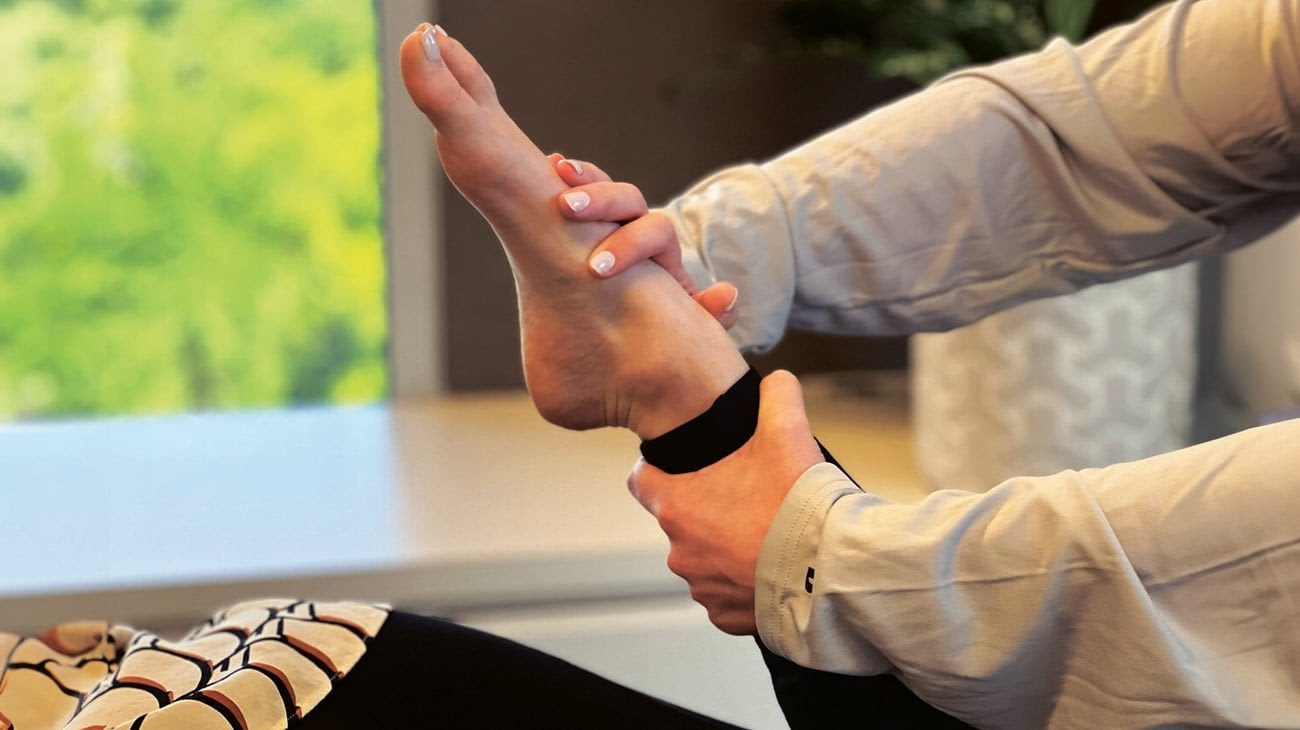Our feet are the vehicle through which we explore our surrounding landscape, so experiencing any pain can feel debilitating. A recent study reports that 81% of Americans have reported foot pain in 2024, and 21% of adults have experienced foot discomfort for one to five years.
Not surprisingly, those whose careers cause them to be on their feet for extended periods experience higher levels of foot pain. For example, those in construction, retail and the food service industry experience increased foot pain due to the physical demands of their positions. The longer you wait to assess your foot pain, the worse your injury could become, leading to harsher outcomes like surgery.
Causes & Common Conditions of Foot Pain
The foot is made up of 26 bones, 30 joints, and over 100 muscles, tendons and ligaments. Each of these intricate structures can be a source of pain. These pain sources include injury, overuse, inflammation and peripheral neuropathy. Some common foot pain includes:
- Foot fractures and ligament tears: occur from falls or accidents.
- Tendinopathy: creates local inflammation and pain within the muscle attachments to bones in the foot.
- Plantar fasciitis: inflammation of the area around the tight band of tissue called the fascia at the bottom of the foot. It is the most common source of heel pain and often worsens in the morning and with prolonged activity.
- Achilles tendinopathy: inflammation around the Achilles tendon and results in pain on or slightly above the heel.
- Peripheral neuropathy: the degeneration of nerves within the feet commonly associated with diabetes. Symptoms include numbness, tingling and burning pain.
- Arthritis: a condition characterized by damage and stiffness of the joints. It is a natural part of aging and can affect any one of the 30 joints in the foot.
- Bunions: form when bones in the toes shift out of their correct alignment. They can result in pain and stiffness.
Regardless of the cause, physical therapy is a highly effective solution for foot pain, offering significant relief and improved mobility.
How Can a Physical Therapist Help?
In 2024, physical therapy received the highest effectiveness score for foot pain recovery, a switch from 2023, where surgery led. This can be attributed to patients seeking:
- Less invasive treatment methods
- A decrease in medical care costs
- A holistic health approach where the root cause of pain is addressed rather than simply symptom management
As soon as you experience foot pain, you should make an appointment with a physical therapist. Research indicates prevention is the best way to get ahead of the pain. After evaluating your pain, a physical therapist will work with you to formulate a plan to alleviate your pain, restore function, and reduce the risk of future injuries. Depending on the severity of your condition, our evaluation can help not only relieve your pain and restore function but also reduce the risk of future injuries in the long run using a combination of:
- Manual physical therapy: a hands-on technique used to decrease pain and improve range of motion and flexibility in stiff joints and muscles.
- Therapeutic exercise: helps restore muscular and skeletal function, corrects impairments to reduce pain and increase flexibility
- Stretching: improves flexibility and reduces muscle tension in the feet
- Strengthening: exercises focused on strength building improve the foot muscles and support structures.
- Neuromuscular re-education: re-training your muscles to return to normal, controlled movement patterns.
- Augmented soft tissue mobilization (ASTYM): regenerates healthy soft tissues and eliminates scar tissue that may be causing pain.
- Recovery education: guiding you on healing techniques such as utilizing heat and ice and avoiding certain activities.
By utilizing a combination of treatment methods, the physical therapist ensures that patients receive the best care possible to return to the life they love. Don’t be surprised when you work on the strength and mobility of your lower back, knees, and hips in physical therapy because they can contribute to foot pain. You can do some exercises at home to strengthen the muscles and reduce the chance of worsening foot pain.
Home Exercises to Treat Foot Pain
Complete these exercises to strengthen the bottom of the foot and the calf, which connects the foot to the knee.
- Calf raises: stand up straight and rise onto the balls of your feet (tip toes), then lower your heels to the floor. Repeat five times.
Towel scrunches: Sit in a chair with your feet flat on the floor. Lay a washcloth or kitchen towel on the floor in front of you. Put your toes on the end of the towel and scrunch your toes so the towel is pulled towards you. Repeat five times.
Eccentric heel raises: Stand up straight with the balls of your feet on a step. With straight knees, lift the heels up to an elevated position, remove one foot from the step and lower your standing leg to the starting position. Repeat five times on each side.
Single-leg balance: Stand with your feet hip-width apart with your hands on your hips. Lift your left leg off the floor and bend it at the knee. Hold the position for 30 seconds. Return to the starting position and repeat on the other leg. Complete five times on each side.
Complete these exercises to alleviate foot and ankle stiffness, plantar fasciitis and Achilles tendinopathy.
- Toe extensions: sit in a chair with your feet flat on the floor. Pick one foot up and place it on your opposite thigh. Grab your toes with one hand and pull them up toward your ankle until you feel a stretch. Hold for 10 seconds and repeat five times on each foot.
Tennis ball roll: sit in a chair with your feet flat on the floor. Place a tennis ball on the floor near your feet. Put the arch of your foot on top of the tennis ball and roll it around, massaging the bottom of your foot. Roll for one minute and repeat five times.
Gastrocnemius stretch: Stand facing a wall with the palms of your hands on the wall. Place one foot a few inches behind you, and make sure both heels are on the floor and legs are straight. Lean forward from the hips until you feel a stretch in your Achilles tendon and calf muscle. Hold the stretch for one minute and repeat five times on each leg.
Soleus Stretch: Stand facing a wall with the palms of your hands on the wall. Place one foot a few inches behind you, and make sure both heels are on the floor and knees are bent. Lean forward from the hips until you feel a stretch in your Achilles tendon and calf muscle. Hold the stretch for one minute and repeat five times on each leg.
Don’t be surprised when you work on the strength and mobility of your lower back, knees, and hips in physical therapy because they can contribute to foot pain.













